Posts Tagged ‘fear of crime’
Posted on: November 25th, 2013 by Smart on Crime
“It is said that no one truly knows a nation until one has been inside its jails. A nation should not be judged by how it treats its highest citizens but how it treats its lowest ones” – Nelson Mandela
You have probably heard of Andrew Wiggins, Canada’s top high school basketball player. But do you know Ayodele Olutayo? Olutayo who? Is he a basket ball player or rapper? Google the name and you find nothing. So, what makes Olutayo special? Nothing really, except that he won a Rhodes Scholarship the very same week that Wiggins announced he was joining the University of Kansas men’s basketball team. Two stories. Two male black youth. Two very different media responses.
Unlike for Wiggins, the media was silent about Olutayo. Like they are about most good-news, positive stories. However, the media continues to obsess over stories that feed public appetite for fear and perpetuate western images of hyper muscular, hypersexual, anti intellectual and criminal black masculinity.
Let’s go back to Olutayo. Chosen on the basis of exceptional intellect, character, leadership and service, the Rhodes scholarship is the oldest and most prestigious scholarship in the world. Since 1904 when Rhodes Scholarships were first awarded, there have been about 1,000 Canadian who received this scholarship. Olutayo joins this elite group which includes Bob Rae, Susan Rice, and Bill Clinton, noble laureates, Pulitzer Prize winners, Olympians and scientists. However, this is not a story that aligns with the negative image of black men. Stories of negative stereotypes are given prominence in the media, feeding our collective fear and risk obsession. Positive stories are obscured as dislike of certain groups is projected as fear and we make the group one thing, and one thing only, but this risk obsession hurts us all.
Fear of fear hurts us all because it enables objectifying of others and distancing from our common humanity. Believing we have nothing in common with those who are different and unlike us, we disenfranchise them but rob ourselves of our own humanity, empathy and compassion.
Empathy is good, but what of public safety? On the other hand, risk obsession never created true safety. The zero tolerance era is prime example. Black males and aboriginal youth were excluded from education in disproportionate numbers. The fear of fear bred more fear, young lives were impacted and many were pushed out of schools into vices and criminality. There are now more aboriginal children in jails and foster homes than were in the residential schools. We may deport immigrants, confine aboriginals, jail the undesirables, but our paranoia is not assuaged. Fear of fear hurts us all, wastes public funds and renders us calloused. It’s like the TV show, Criminal Minds; the suspect who feels threatened by imagined or real fears tries to “get them before they get me”. It is sad to watch the delusions and deranged conduct on TV but harder still to see our society under the grip of fear. Waterloo Region residents are good people, it would be sad to see us sacrifice our barn raising heritage, philanthropy at the altar of risk obsession.
It is not only sad, but dangerous as it leads us to ignore real problems. No one doubts that there are real problems in society among our youth, black and white. Most serial killers and school bombers are white but we ignore them until they explode and then pundits pontificate on their mental health. But we are quick to move on to more juicy stories and tales of fear. We dissociate criminality or evil from western society so we miss warning signs. Preoccupied with fear, we stigmatize and avoid mental health issues, underfund preventive and/or redemptive programming. Most of us believe it is only a passing phase for our own youth and busy ourselves with punishing the youth we consider “the other”. Collectively, society is trapped; fear mongering, sensational media, and politically motivated, nationalist and patriotic fervor is evoked and manipulated to keep us under siege.
The fear of fear reduces our humanity and enables us to justify our inhumanity and we are thereby diminished. If we can convince ourselves that black men or Aboriginals are criminals, then compassion towards them is unwarranted. The problem is that we are no longer dealing with actual criminals; every black man becomes criminal and unworthy of compassion regardless of whether they ever commit a crime or not. The reality is that criminals come in all colours, shapes and gender but we exploit systems and structures to criminalize certain ones and then act towards that group as though they were all criminals and nothing but criminals. Harsh laws, stiffer penalties, more policing dollars, profiling, surveillance and punishing become our preoccupation. We think nothing of killing black males in “self defense” because the black male, armed or not is criminal first in our minds. Preemptive self defense and “stand your ground” laws legitimize dislike of “the other”. We all become pitiable, projecting our fears on others, we spend more on policing but crime rates decrease and we become what we obsess about.
Risk obsession excuses our inattention to preventive, rehabilitative, redemptive measures towards our youth, the oppressed, immigrants and other vulnerable populations. Society constructs black boys, not as children, but as monsters, to be feared. Many black youth in this community are upstanding students at Conestoga college, Wilfrid Laurier University, University of Waterloo or our primary and secondary schools, but when we see them downtown at night, we see only black and immediately get into flight or fight mode, becoming hyper vigilant and projecting our fears.
The African Canadian Association of Waterloo Region & Area believes that the African male child is a child, a precious gift. Some of them are children in adult bodies, confused, fearful and self conscious. We the adults in their lives must not fail them simply because we fear and are obsessed with risk. The association’s activities are designed to respect, protect, educate, empower and nurture precious seed. Through our community gardens, homework club, culture camp, and “Bring on the sunshine” event we engage our children and youth. It takes a village to raise a child and all of Waterloo Region should be the village around all of our children.
This past summer six youth interns worked with our community gardens project, digging, planting, harvesting. There was nothing to fear about them. In our homework club we actually believe kids have brains and guess what we find; they do! Who knows if tomorrow’s Rhodes Scholar lives among us. During our 2013 summer culture camp, the camp meant for young children became a hangout for many tweens and teenagers. The coordinator quickly harnessed their strengths by forming them into a volunteer corp that helped to run the camp.
Strength, beauty, faith, hope and love abound in this community. It is who we are and I am a proud and happy resident of Waterloo Region who values our beautiful mosaic. We must eschew the fears that divide, maim and paralyze us by embracing our common humanity for we are better together and shall not let fear divide us. I hope adults, youth, community leaders, academics, the criminal justice system, schools, politicians, leaders and police services will collaborate to create humane responses that benefit all and elevate all.
“The scholarship of engagement means connecting the rich resources …….. to our most pressing social, civic and ethical problems, to our children, to our schools, to our teachers and to our cities… (Ernest L. Boyer, The Scholarship of Engagement, 1996.)
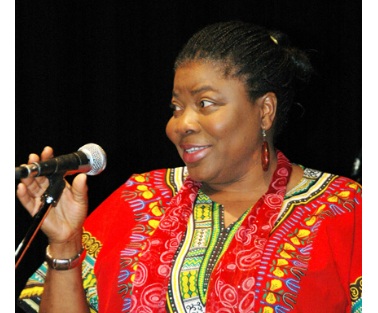
Funke Oba
Author: Funke Oba is the immediate past president of the African Canadian Association of Waterloo Region & Area. Funke teaches social work, is a diversity trainer/consultant and community based researcher with a focus on social justice, equity and social construction of complex phenomena.
Find more community responses about fear of crime:
Posted on: November 21st, 2013 by Smart on Crime
A woman’s purse is snatched as she walks downtown. A youth is swarmed and attacked by four other youth. A man pounds on his neighbour’s door, uttering threats when she refused to return his son’s football. The woman fears leaving her home. Fear of crime can skyrocket for such victims of crime. Trouble concentrating, hyper-vigilance, and a generalized feeling of being unsafe may ensue. Crime victims may install alarm systems, seek Peace Bonds, or relocate, but an increased fear of crime may persist. Friends and family, hearing about the crime, may also fear crime more.
Restorative justice can dramatically reduce crime victims’ post-traumatic stress symptoms and fear of crime. Restorative justice is a voluntary process that brings together the victim, perpetrator, and their supporters with trained facilitators to talk about how they have been affected by the crime, and who needs to do what to make things as right as possible. Community Justice Initiatives (CJI) in Kitchener has been a leader in this worldwide movement for nearly 40 years.
Carol, who was hit over the head with a broken bottle as her purse was snatched, had missed many days at work, overwhelmed by fear. In the seven months since the incident, she had been unable to face buying a new purse. When Carol and her daughter met with the perpetrator, Brianna, and Brianna’s grandmother in a facilitated process, Carol and her daughter described the far-reaching effects of the incident. Carol learned about Brianna’s traumatic history and ensuing drug habit that led to the robbery. She saw how upset Brianna’s grandmother was by Brianna’s behavior, and Brianna’s repentance and efforts to get on the right track. She learned Brianna was not the monster that she had imagined her to be, but a troubled young woman who had been the past victim of rape and abuse, trying to turn her life around. Carol’s fear was transformed. On the way home from the restorative justice process, she bought a new purse and returned the next day to work with confidence.
Vigit, who had been swarmed and hit by four other youths, no longer needed to look around anxiously as he left the house after he participated in a restorative justice process. In a follow-up interview, Vigit said, “It was great to get together with the individuals to discuss what happened. I was personally attacked and felt really unsafe at the time. This gave me peace of mind, and helped everyone move on.”
Similarly, Barbara, who was living in fear following threats Bill shouted while pounding on her door, experienced not only a renewed sense of safety, but deep compassion and support from her neighbours, who learned, as an outcome of the process, that her husband was dying of cancer. The football had come into her yard one too many times, and had damaged a birdbath made by her husband. Bill not only apologized for his threatening behavior and for bad-mouthing her character to all the neighbours. He volunteered to go around to all the neighbours and explain what had happened. The neighbours also came up with a new place for the youth to play football.
Research shows that burglary and robbery victims who go through a restorative justice process have a dramatic reduction in post-traumatic stress symptoms compared to those who don’t. Fear of crime drops not only for the direct victim, but for family, friends and neighbours, too, as they see the person responsible for the harm held accountable, apologize and take steps to repair the harm.
Just as a restorative justice process for cases before the courts can reduce fear of crime, use of restorative justice in schools can help to build a stronger sense of safety and community. Schools that use restorative justice to address crime and harm have lower suspension rates and higher perceptions of safety by staff and students. This typically leads to a more effective learning environment, less absenteeism of staff and students, and higher student achievement levels.
Restorative justice can also be used within the community to help people resolve escalating tensions between neighbours, on sports teams, or within housing developments. After meeting with trained mediators and addressing the underlying issues behind people’s positions, the fear of violence erupting is replaced with new understanding and a mutually acceptable way forward.
Contact Community Justice Initiatives for more information about restorative justice, or to explore using a restorative justice process to address a particular crime, harm or conflict. Be part of the movement to build healthier communities and reduce the fear of crime.
Community Justice Initiatives
49 Queen St. N—3rd floor
Kitchener, Ontario N2H 2G9
info@cjiwr.com | 519-744-6549
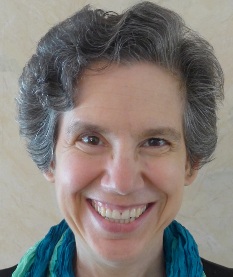 Author: Sue Klassen is completing her Masters in Conflict Transformation, with concentrations in Restorative Justice and Trauma Healing. As past president of Partners in Restorative Initiatives, a restorative justice agency in Rochester, NY, she has 12 years experience in working with restorative justice and trauma in courts, schools and the community, as a facilitator, trainer and advocate.
Author: Sue Klassen is completing her Masters in Conflict Transformation, with concentrations in Restorative Justice and Trauma Healing. As past president of Partners in Restorative Initiatives, a restorative justice agency in Rochester, NY, she has 12 years experience in working with restorative justice and trauma in courts, schools and the community, as a facilitator, trainer and advocate.
Find more responses about fear of crime:
Posted on: November 19th, 2013 by Waterloo Region Crime Prevention Council
Fear of crime may cause an increase in crime within a community. Although there is not a consensus in the literature around this point, it is clear that fear of crime is unwelcome and tends to negatively impact quality of life. Fear of crime is measured in this survey as the percentage of respondents indicating they feel very unsafe, or somewhat unsafe, walking alone in their area after dark.
The Statistics
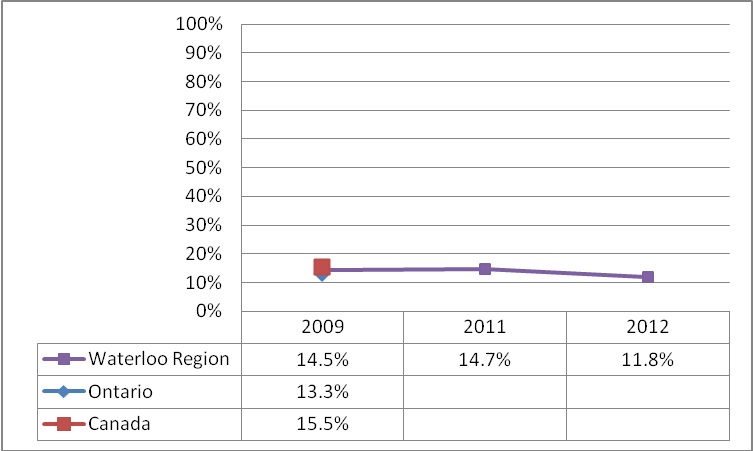 Data Sources: Statistics Canada General Social Survey Victimization Cycle (Released Every Five Years) University of Waterloo Survey Research Centre Local Area Survey (Released Annually)
Data Sources: Statistics Canada General Social Survey Victimization Cycle (Released Every Five Years) University of Waterloo Survey Research Centre Local Area Survey (Released Annually)
The Story Behind the Numbers
Levels of fear of crime in a community are expected to be relatively stable in the short term. Locally, levels of fear of crime are stable with changes within the margin of error. Comparing Waterloo Region to Ontario and Canada, the numbers are relatively similar with Waterloo Region appearing to have a slightly lower fear of crime than Canada.
Read the Community Responses:
Posted on: November 19th, 2013 by Smart on Crime
There has long been a perception that Kitchener’s downtown core is more unsafe than other downtowns and neighbourhoods in our Region. To dig deeper into the Snapshot in Time: Root Causes of Crime in Waterloo Region indicator on fear of crime, we tracked down the Mayor of Kitchener, Carl Zehr.
1) What is your response to the data presented on the fear of crime indicator? How does it make you feel when you reflect on this indicator?
The indicators in this report are generally not surprising to me since they reflect other statistics I have seen. While this region is often expected to do better than the rest of the province and country, it is clear that we are very similar to other CMA’s in Canada. There are a few areas where we rank a bit better in the indicators but it is clear that the general economic success of the region enjoys does not translate to every sector of our community. Given the recent information regarding crime in the downtown versus suburbs, we continually need to deal with the perception of crime versus the reality. The perception is the downtown is not safe – the reality is it’s growing, has changed dramatically and if crime is an issue, it’s more outside of the downtown. Perceptions need to change too. We therefore, collectively, have a lot more work to do.
2) Who is involved in addressing this issue in the community? What are you already doing about it?
Through the programs the city supports at the community centres and neighbourhood associations, many people have been busy providing value added and positive activities for the community as a whole, and, especially for youth. There are many independent not-for-profit organizations in the city and community that are also providing services and programs which allow people of all ages to “stay out of trouble”. Kitchener and other local governments provide funding for many of these organizations even though “it is never enough”.
Economic and education opportunities have a significant impact on crime rates. Indirectly the city’s economic development division helps the cause by working to create the climate for entrepreneurs and companies to succeed.
3) What else should be done and/or needs to be done about it?
As noted above, we have many organizations doing good work but I think the fact that there are so many may be holding the community from improving our ranking. Organizations and funding bodies, including governments, of these organizations need to give serious consideration to eliminating duplication of service and programs so that more resources can be directed towards to the programs and away from administration.
Many of these various agencies (connected to this issue and others) appear to be so competitive and spend a lot of time figuring out how to survive (writing grants, etc.) rather than working collaboratively or merging to improve programming/services. Streamlining services to have one access point helps people figure out where to get help. The Community Support Connections model, which merged 4 seniors’ agencies, is a good model and not many have followed it.
Thank you Mayor Zehr, for your insightful responses.
What do you think about fear of crime in Waterloo Region neighbourhoods?
Read more community responses about fear of crime:
Posted on: September 4th, 2013 by Waterloo Region Crime Prevention Council
Crime prevention, social capital, neighbourhood cohesion… all the stuff of Jane Jacobs and Mr. Rogers! In this latest episode of “By The Numbers” Anthony Piscitelli pays homage to a certain friendly neighbour in order to give you the highlights of a recent report from the Waterloo Region Crime Prevention Council.
You can find the full report here.
What do you think…. does your neighbourhood have a high level of social capital? Or do you live in a neighbourhood that has a high fear of crime? What does your neighbourhood do to build community and social capital?
I’d love to hear your stories!
Posted on: July 11th, 2013 by Waterloo Region Crime Prevention Council
Over the next ten weeks stay tuned here to the blog discussion on The Root Causes of Crime in Waterloo Region where community leaders, community residents and leading experts across Waterloo Region weigh in on the root causes of crime outlined in the report.
Owner Occupied Homes
Individuals living in owner occupied homes are less transitory than renters. Homeowners’ financial interests also encourage them to support positive neighbourhood interactions. Home ownership also represents a Canadian value because it is seen to alleviate real and/or perceived disadvantages for individuals. For these reasons higher levels of home ownership is a protective factor against crime in a community.
The Statistics
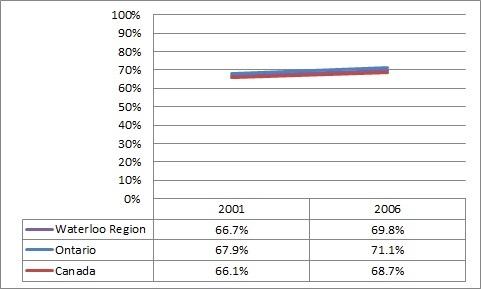 Source Data: Statistics Canada, Census (Released Every Five Years)
Source Data: Statistics Canada, Census (Released Every Five Years)
Story Behind the Numbers
Home ownership in the Kitchener-Cambridge-Waterloo CMA increased from 2001 to 2006. This increase in home ownership echoes the national trend which saw a similar increase over this time period. This is a positive trend for Waterloo Region as it indicates increased stability within the population.
Read the Community Responses
Posted on: November 6th, 2012 by Waterloo Region Crime Prevention Council
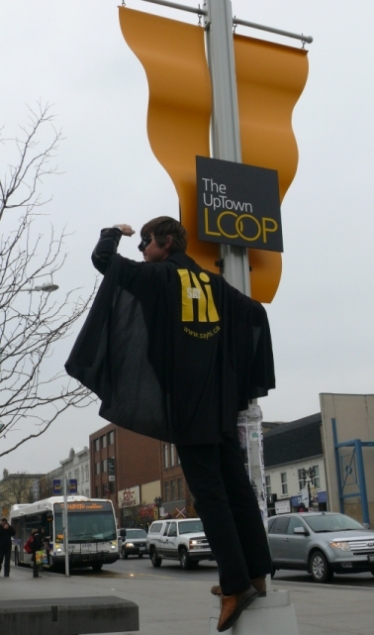
It’s Crime Prevention Week in Ontario. Every November, community agencies, organizations, police departments, municipalities and citizens come together to raise awareness of crime prevention as a building block for creating vibrant, dynamic, safe and healthy communities. “Engaged communities are safer communities” is this year’s theme! We couldn’t agree more!
Your average neighbourhood superhero can make a difference every day with actions small and large. Watch our Twitter and Facebook pages this week where we’ll be posting tips and sharing ways that you can get engaged and be a friend of crime prevention in your home, neighbourhood, workplace, faith community, school, team, youth group….. you name it.
How do you engage in your community? What do you see others doing? Do you see a gap where some one should engage?
Love to hear from you – we know you are out there doing amazing things to create safer communities.
Posted on: October 13th, 2011 by Smart on Crime
Fulfilling an election promise, the Government of Canada recently introduced the “Safe Streets and Communities Act” or Bill C-10. If passed, Bill C-10 would significantly amend the Canadian Criminal Code and related legislation. C-10 is an omnibus bill that includes nine pieces of proposed legislation covering changes from mandatory minimum sentences to tougher penalties for selected crimes. The government has promised to pass this Bill in the first 100 days of Parliament.
What’s the rush?
The government is well aware a 30-year obsession with “law and order” in the United States has been politically popular but has actually failed to reduce crime. Facts are facts and the failure of the US “tough on crime” approach (among others) is well documented. Unfortunately, Canadians are debating crime more than the weather these days, blissfully unaware of how much they will pay to implement a law whose major components have been proven failures in other lands.
From a crime prevention perspective such public interest in building safer communities is always a positive development. Everyone has a role to play and we can’t and shouldn’t leave the work up to any one order of government and its institutions. It’s a teachable moment.
That’s why the time frame of 100 days to discuss a major overhaul of the Canadian justice system is completely inadequate. Of course, everyone wants “safe streets and communities”, but in a classic American move this Bill lumps in everything from sexual abuse of children to possession of marijuana. If you disagree with the pot provision God help you because then you must also be “soft’ on sexual abuse of kids. The populist needs of a government should not stop Canadians from assessing how each specific piece of legislation tossed into this soup will affect the balance between prevention, rehabilitation, restitution and denunciation.
Some of the measures (such as Serious Time for Serious Crime Bill and the Abolition of Early Parole Act) will increase the number of inmates in an already over-crowded prison system from 13,000 to more than 17,000. Such huge increases come with huge costs. Adding more than 4,000 more inmates will mean spending an additional $1.8 billion over five years. And that is the just the federal cost. The provinces already pay to incarcerate more than 20,000 inmates at the current status. During a time of vast fiscal restraint such needless pressure on taxpayers to solve a problem that doesn’t exist is excessive and irresponsible.
In the end, the main question must be whether C-10 will in fact accomplish what the government says it will do: increase public safety. Unfortunately the answer is a resounding NO. Substantial research shows that “tough on crime” strategies have neither reduced crime nor assisted victims. And all of this is happening at a time when crime has been at its lowest in decades across the country.
So, let’s recap: during one of the lowest crime rates in history and in the midst of a crippling recession where people are losing jobs in droves the federal government is implementing a scheme that has failed elsewhere at a cost that will more than double Canada’s current public safety budgets.
This is not OK, and Canadians deserve a full and proper debate on each and every component of the omnibus bill.
Author: John Shewchuk, Chair, Waterloo Region Crime Prevention Council
Posted on: July 26th, 2011 by Smart on Crime
On the heels of the July 21st Statistics Canada report on crime statistics for 2010, several media outlets ran editorials over the past few days asking a similar question: If crime has been on a downward trend since 1973, why is the ‘tough of crime’ agenda so popular? These editorials appeared as music to our ‘smart on crime’ ears; because asking tough questions about evidence based practice is the smart thing to do!
Here’s a collection of the coast-to-coast reflections:
Have you seen other editorials and articles on this in your city or town newspaper? Send us the link and we will add it to the list above.
Posted on: February 9th, 2011 by Waterloo Region Crime Prevention Council
Does watching real-life crime stories increase your fear of crime or do you watch real life crime stories because you are afraid of crime? This question remains after reading Watching the Detectives: Crime programming, fear of crime, and attitudes about the criminal justice system. Researched and written by university professors Lisa Kort-Butler and Keller Hartshorn, this study shows a relationship between fear of crime and the type of television program people watch.
 According to the study, people who watch nonfiction crime programs, like ABC’s Primetime or The First 48 hours, are more fearful of becoming a victim of crime than those who did not. Interestingly, they found that people who watched crime dramas, like Law and Order or NYPD Blue, were no more fearful of crime than those that did not these shows.
According to the study, people who watch nonfiction crime programs, like ABC’s Primetime or The First 48 hours, are more fearful of becoming a victim of crime than those who did not. Interestingly, they found that people who watched crime dramas, like Law and Order or NYPD Blue, were no more fearful of crime than those that did not these shows.
The article speculates the difference is related to the fact that crime dramas show the police getting “the job done and the offender gets his or her desserts”. In contrast, crime documentaries often show the authorities one step behind the criminal while they emphasis that the victim could be anyone. Despite this speculation the authors acknowledge the limit of their study. Based upon the results they simply do not know if fear of crime is the cause or the result of what TV shows people watch. This is summarized in a common used academic statement….. correlation does not mean causation.
This limitation in research is important to recognize as it is a common issue in studies. Using statistics academics can be fairly confident that one thing is related to another but in order to explain that one thing causes another is much more difficult.
The Waterloo Region Crime Prevention Council has done its own Fear of Crime Report using data from the 2008 Waterloo Region Local Area Survey. While it doesn’t ask any questions about TV habits, there are some fascinating observations and findings about perceptions of safety and fear of crime. You can find a copy of the report online.
So, what do you think, do people who are afraid of crime gravitate towards crime documentaries? Or does watching real life crime stories gradually make someone more afraid of becoming a victim themselves? The experts don’t know yet, so your guess is as good as theirs!


 Author: Sue Klassen is completing her Masters in Conflict Transformation, with concentrations in Restorative Justice and Trauma Healing. As past president of Partners in Restorative Initiatives, a restorative justice agency in Rochester, NY, she has 12 years experience in working with restorative justice and trauma in courts, schools and the community, as a facilitator, trainer and advocate.
Author: Sue Klassen is completing her Masters in Conflict Transformation, with concentrations in Restorative Justice and Trauma Healing. As past president of Partners in Restorative Initiatives, a restorative justice agency in Rochester, NY, she has 12 years experience in working with restorative justice and trauma in courts, schools and the community, as a facilitator, trainer and advocate. Data Sources: Statistics Canada General Social Survey Victimization Cycle (Released Every Five Years) University of Waterloo Survey Research Centre Local Area Survey (Released Annually)
Data Sources: Statistics Canada General Social Survey Victimization Cycle (Released Every Five Years) University of Waterloo Survey Research Centre Local Area Survey (Released Annually) Source Data: Statistics Canada, Census (Released Every Five Years)
Source Data: Statistics Canada, Census (Released Every Five Years)
